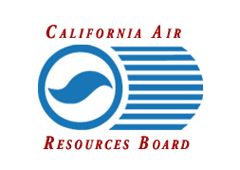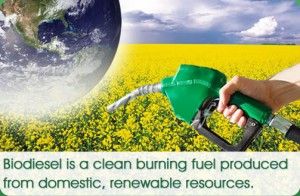Radicalness of CARB’s long-term plans comes into focus
 March 20, 2013
March 20, 2013
By Katy Grimes
SACRAMENTO — While the California Air Resources Board continues to forge ahead like a blind bull in a china shop with its far-reaching climate change plan, the extent of the destruction that could result is beginning to become evident.
At a legislative hearing Tuesday, it became uncomfortably apparent that CARB officials simply do not understand what drives the free market. Unfortunately for California, the agency’s environmentalist supporters and much of the Legislature are in the same boat.
Despite warnings and the many legislative hearings where business and trade associations have detailed serious concerns, CARB has made no changes to its scoping plan or cap-and-trade program. Nothing gets corrected, no in-depth economic analysis is ever completed. The far-reaching agency just continues to move forward with its plan to reshape the state’s economy, appearing to be unaccountable even to the Legislature.
‘Health-based’ standards = zero GHG emissions
The Senate Transportation and Housing Committee conducted another hearing on AB 32’s implementation – this one aimed at light-duty vehicles (cars and light trucks, mini vans, and sport utility vehicles) and the fuels, mostly gas, that they use in California.
AB 32, California’s Global Warming Solutions Act of 2006, set the 2020 greenhouse gas emissions reduction goal into law.
“In recognition to the threat to our environment, human health, and human society posed by global warming, California enacted AB 32 to reduce greenhouse gas emissions significantly by 2020,” the committee analysis said. “ARB indicates that reducing GHG emissions to 1990 levels by 2020 and 80 percent of 1990 levels by 2050 means completely altering the types of cars Californians drive, and the fuels we use.”
CARB has been heavily pushing the 2050 goals more recently, because as the agency’s Richard Corey admitted, “the last three years have seen the biggest drop in carbon emissions.” California has nearly met its 1990 levels of carbon emissions, and done this without radically changing the standard of living in the state.
In CARB’s cross hairs: all conventional automobiles
But that is apparently not enough.
“California must move toward a zero-based emission system,” air board executive Alberto Ayala said. “These are health-based air quality standards,” he added.
This “health-based standards” is a new phrase for the CARB and its supporters. It was used throughout the hearing.
“Poor air quality is central to asthma, cardiovascular [health problems] and premature deaths,” Ayala said. “Transportation is a significant part of this challenge. The strategy to reduce must focus on this sector.”
While there are other sources of pollution CARB could go after, it is clear that the air board has chosen the automobile as villain number one. Ayala noted “70 percent [of pollution] is particulate matter, and 40 percent is carbon emissions.”
Taking CARB’s activism one step further, Ayala even said the CARB is now “pushing fuel-cell vehicles.”
“Be careful of being seduced by technology,” state Sen. Mark DeSaulnier, D-Concord, warned Ayala. “We can’t set aspirational goals but not expect the private sector to come up with the changes.”
CARB plans on ridding the state of 85 percent of its 22 million internal combustion engine vehicles by 2050 through implementation of its Low Carbon Fuel Standard.
Currently, only 0.0002 percent of vehicles in California use alternative fuel or have hybrid engines, a number acknowledged by several of the transportation experts at the hearing. Hybrids, electric cars and alternative vehicles just don’t sell. They are much more expensive than internal combustion engine vehicles, most are unattractive, and the purchase costs versus savings don’t pencil out on a spreadsheet.
Instead of working with auto manufacturers to help create fuel-efficient and hybrid vehicles people will buy, CARB continues to mandate unrealistic policies and goals.
Low Carbon Fuel Standard to make cost of travel soar
Central to the air board’s policy strategy is the Low Carbon Fuel Standard program, which took effect in 2011 and requires a reduction in “carbon intensity” in all fuel.
CARB calculates emissions in the carbon intensity calculation, but also includes extraction and how the fuel is refined and transported. As part of its calculation, CARB also assigns scores to oil from all over the world. The gasoline produced from it must be mixed with “cleaner” fuels to achieve a carbon reduction.
Showing what a subjective process this really is, the air board includes factors such as environmental-friendliness of the oil-producing country.
 The Western States Petroleum Association has a big problem with CARB, and for good reason: The inadequate supply of low carbon intensity fuels and biofuels will very shortly leave oil refiners with no viable compliance options. According to a recent study commissioned by the association, the low carbon fuel standard would produce a steep decline in demand for refined products, particularly gas, resulting in a loss of 20 to 30 percent of the state’s refining capacity by 2017, and up to a 35 percent loss by 2020.
The Western States Petroleum Association has a big problem with CARB, and for good reason: The inadequate supply of low carbon intensity fuels and biofuels will very shortly leave oil refiners with no viable compliance options. According to a recent study commissioned by the association, the low carbon fuel standard would produce a steep decline in demand for refined products, particularly gas, resulting in a loss of 20 to 30 percent of the state’s refining capacity by 2017, and up to a 35 percent loss by 2020.
California’s cap-and-trade auction program, according to the WSPA, will increase the cost of making gasoline and diesel up to 69 cents per gallon, depending on the cost of carbon allowances.
Cathy Reheis-Boyd, president of the WSPA, warned that continuing with the CARB plan for cap-and-trade auctions and the low carbon fuel standard could result in refineries closing and the loss of 51,000 jobs in California. With these refinery closures and lost jobs, by 2020, the state stands to lose $3.4 billion per year or more in tax revenues, Reheis-Boyd said.
Oil’s central role in California, by the numbers
Reheis-Boyd shared some facts with the committee:
— 96 percent of California’s transportation fuels are petroleum-based.
— Californians consume 42 million gallons of gas, and 11 million gallons of diesel fuel each day.
— 1.750 million gallons of gas and half a million gallons of diesel fuel are consumed every hour in California.
— California is the third-largest fuel consuming entity on Earth, behind the U.S. as a whole, and all of China.
Reheis-Boyd said when the low carbon fuel standard was introduced in 2007, the petroleum industry was told it was a performance-based standard that would let the marketplace determine what fuels and technologies were best suited to lower California’s emissions. “Now we’re being told the only hope for the low carbon fuel standard is to compel some industries and oil companies, to invest in technologies they may not feel are economically viable or are incompatible with their long-term business objectives,” Reheis-Boyd wrote in a recent op-ed.
As more evidence that CARB’s leaders don’t understand the marketplace, they are now dictating to businesses what they should be producing.
Legislative analyst remains skeptical of CARB claims
For more than four years, the nonpartisan Legislative Analyst’s Office has raised concerns about the CARB’s implementation of AB 32, the scoping plan, and low fuel standard. “Our review found that the ARB’s economic analysis raises a number of questions relating to (1) how implementation of AB 32 was compared to doing business-as-usual, (2) the incompleteness of the ARB analysis, (3) how specific GHG reduction measures are deemed to be cost-effective, (4) weak assumptions relating to the low-carbon fuel standard, (5) a lack of analytical rigor in the macroeconomic modeling, (6) the failure of the plan to lay out an investment pathway, and (7) the failure by ARB to use economic analysis to shape the choice of and reliance on GHG reduction measures,” the LAO explained in a 2008 report to the Legislature.
The LAO position remains unchanged. Tiffany Roberts with the LAO presented a nearly identical critique Tuesday to the Senate committee of CARB’s plans.
Roberts said the CARB has never done a rigorous analysis of the costs and benefits of the scoping plan. “It could be very helpful to the state,” Roberts said. And she added the lack of analysis is a “significant weakness,” and “troubling.”
“[By] assuming that no actions are taken to reduce GHG emissions by 2020, the CARB overstates the problem that it then credits the scoping plan with addressing,” the LAO’s 2008 report found — a point Roberts reiterated Tuesday.
The scoping plan includes an inconsistent and incomplete evaluation of costs and savings associated with its recommended measures, the LAO has consistently reported.
Roberts said CARB still had a very weak basis for its assumptions about the Low Carbon Fuel Standard.
The $25 billion in annualized costs that CARB attributes to the scoping plan are concentrated in one measure—the low-carbon fuel standard. That measure alone accounts for $11 billion, or 44 percent of the scoping plan’s annualized costs, although it provides just less than 9 percent of the plan’s emissions reductions, the 2008 report found. “However, CARB further claims that these $11 billion in annualized costs would be offset by equivalent savings on petroleum products (mainly gasoline) that would no longer be purchased for transportation purposes. Therefore, according to CARB, the net annualized cost of this measure is zero.”
The California Air Resources Board must be using New Math from the 1960s if it thinks heavy regulation comes without a cost. Here is how CARB explains “annualized costs”:
“Savings are generally calculated from reduced energy used as a result of efficiency or other measure. For most measures the savings value listed in the tables results from a reduction in fuel or electricity use or the net reduction associated with fuel switching. ‘Net Annualized Cost’ is calculated by subtracting the savings from the annualized cost.”
And Roberts was quite critical of the air board’s macroeconomic analysis. “The findings are highly dependent upon key assumptions, some of which are based on incomplete data,” she said.
Specifically, CARB is going after transportation, electricity, industry, and commercial and residential sectors for emission reductions. These sectors “must reduce … greenhouse gas emissions through the direct regulatory measures recommended by the program,” the LAO found. “However, after accounting for GHG emissions reductions resulting from the plan’s direct regulatory measures, the four sectors must together achieve additional reductions of approximately another 33 MMTCO2E (millions of metric tons of carbon dioxide equivalents) through the cap-and-trade program.”
Is this realistic? Because the air board hasn’t done trustworthy analyses, no one can know.
Industry’s common-sense suggestions
Several industry providers spoke at the hearing including Curt Augustine with the Alliance of Automobile Manufacturers. Augustine warned lawmakers that the state’s infrastructure is not keeping up with technological changes, and offered several easy fixes:
— Sales tax breaks on hybrid and alternative fuel vehicles.
— More HOV access on highways to help encourage sales of hybrid vehicles.
— More parking and charging access.
— Free or reduced toll road charges for hybrid and alternative fuel vehicles.
If as Gov. Jerry Brown’s plan of 1.5 million zero-emission vehicles in service by 2025 is to be implemented, Augustine said the real answer is to invest in the infrastructure to support these.
 Bob Epstein with Environmental Entrepreneurs touted biodiesel as a viable alternative fuel source because it can be used with existing infrastructure and in cars. Epstein said biodiesel takes care of another problem by using waste in the state’s landfills to make the fuel. Epstein’s testimony indicated that while CARB is headed in the most radical direction, there are plenty of environmental entrepreneurs ready to invest in alternative fuel solutions, which may be easier to implement and won’t require all new infrastructure.
Bob Epstein with Environmental Entrepreneurs touted biodiesel as a viable alternative fuel source because it can be used with existing infrastructure and in cars. Epstein said biodiesel takes care of another problem by using waste in the state’s landfills to make the fuel. Epstein’s testimony indicated that while CARB is headed in the most radical direction, there are plenty of environmental entrepreneurs ready to invest in alternative fuel solutions, which may be easier to implement and won’t require all new infrastructure.
But Epstein asked lawmakers to help get the state government out of the way so entrepreneurs can forge ahead. He warned, “The state needs to be easier to do business in.”
Related Articles
Feds cloud pot picture in CA
Over the strenuous objections of some California lawmakers, the Department of Justice vowed to continue prosecuting the medical marijuana industry
If CA can’t build bridge, what about bullet train through mountains?
If the state of California can’t build a bridge, how can it handle the huge technological and engineering challenge of
Meet the Mother Jones staffer who thinks the bullet train is nuts
There are bullet-train apostates among California Democrats, starting with Lt. Gov. Gavin Newsom, and bullet-train fans among state GOPers, starting




